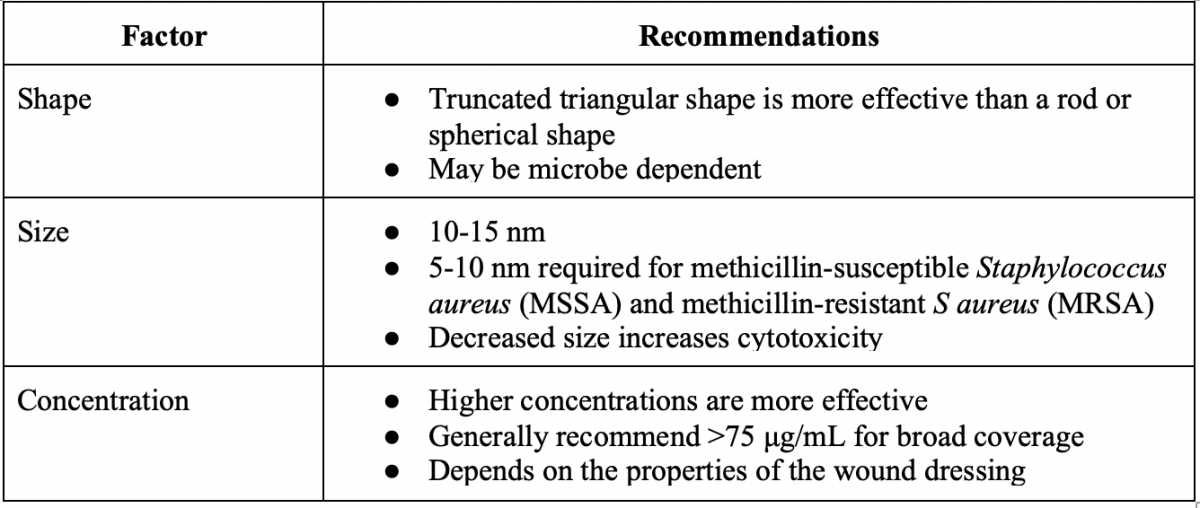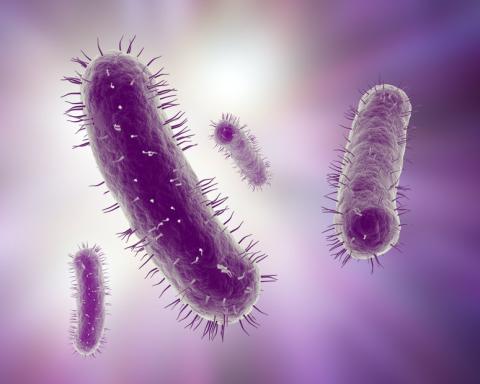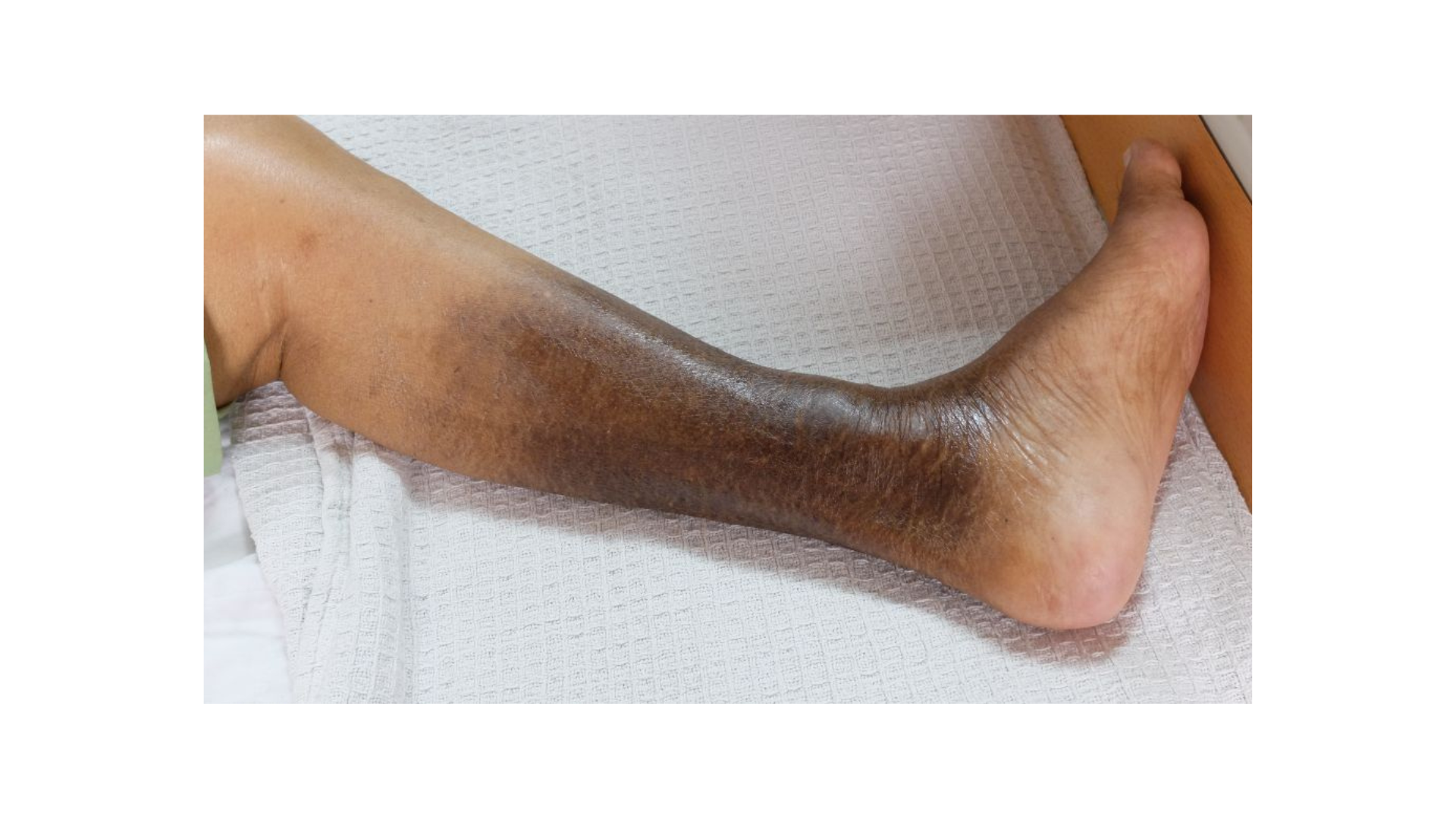Breaking Down Silver: How Bacteria Are Affected
December 21, 2021
Introduction
As a cost-effective alternative to topical antibiotics, silver is now widely available in wound dressings. However, what does silver really do within the wound bed? Silver uses a multifaceted approach to combating infection that attacks bacteria internally.
Mechanical Effects of Silver
Silver as an antimicrobial has been approved for use for decades, although research into the exact mechanism of silver as an antimicrobial agent is still under investigation. Current theories propose a multifaceted approach. Silver affects the external and internal structures of the bacterial cell, including the biofilm, cell wall and membrane, organelles, and enzymes. Silver has seven proposed actions that aid its antibacterial properties. These are:
- Disruption of the cell wall when in the silver ion form (Ag+)
- Disruption of the cell membrane through reactive oxygen species
- Denaturation of ribosomes to inhibit protein synthesis
- Interruption of adenosine triphosphate production
- Disruption of DNA replication
- Denaturation of the cell membrane when silver nanoparticles collect in the cell wall
- Perforation of the cell membrane as silver nanoparticles
Silver likely operates through most or all of these mechanisms, to provide comprehensive antibacterial action.1
Factors Affecting the Effectiveness of Silver
The effectiveness of silver depends on the size, shape, and concentration of silver particles. Silver can be used in the form of silver nanoparticles or colloidal silver. With regard to size, a truncated triangular shape seems to be more effective than a rod or spherical shape, even when both shapes have the same surface area. The effect of shape may be microbe dependent; however, more research is needed.2

Generally, silver nanoparticles between 10 and 15 nm show increased stability and biocompatibility. These nanoparticles also demonstrate more effective antimicrobial activity. However, smaller particles may be needed to penetrate the cellular membrane of Staphylococcus aureus, MSSA, and MRSA.2 The smaller size allows the silver to enter the bacterial cell more readily, although that also means that the nanoparticles will have an increased risk of cytotoxicity within human cells when these particles are used at higher than recommended levels.3 Therefore, it is important to have an optimal balance between size and safety. Another major contributor to silver’s antimicrobial efficacy is its concentration.
Depending on the variation of microbe tested, silver has a lower threshold of effectiveness. However, in most studies, the higher the silver concentration, the more effective the silver nanoparticles are at infection prevention and management.2 This is true for both gram-negative and gram-positive bacteria. Concentration is also affected by the properties of the wound dressing, however, so more research is required for specific concentrations dependent on the dressing’s materials.4
How much do you know about managing the use of silver in wound care? Take our 10-question quiz to find out! Click here.
Indications for Silver in Wound Care
Silver is suggested for any infected, open wound and for burns.5 These may include the following types of wounds:
- Diabetic foot ulcers
- Venous leg ulcers
- Pressure ulcers
- Surgical wounds
- Burns
Silver can be used in wounds that contain mild to heavy exudate, depending on the type of paired dressing. Silver is used in acute or chronic wounds and under compression as needed.6 Expert consensus is to use silver dressings for 2 weeks at the first occurrence of infection. Clinicians should then reassess the wound every 2 weeks until it is healed, and they should modify the treatment plan as appropriate in accordance with the patient’s response to the silver dressing.7
Contraindications to Silver in Wound Care
When reviewing the uses of medical-grade silver, clinicians should consider the symptoms or medical conditions present within a patient that could prove harmful when interacting with treatments. These symptoms or medical conditions are referred to as contraindications.8 Of note, there is little evidence to support the use of silver in noninfected and closed wounds.5 Silver also reduces the effectiveness of enzymatic debridement by about 50%, so alternatives such as pigment-complexed polyvinyl alcohol (PVA) should be considered.9 Additionally, silver is contraindicated in patients with:
- Renal or hepatic failure
- Radiotherapy or magnetic resonance imaging scanning
- Dry wounds (unless silver is applied in a gel format)10
When ingested at high doses over a long period of time, silver may damage the kidney and liver, as well as cause seizures. However, these effects have not been seen with the topical use of silver and are more common with colloidal silver.11 Nevertheless, clinicians should be conservative in their use of silver wound dressings in the long term and should consider alternatives if the wound does not respond to the current treatment plan.
Conclusion
Silver has at least seven possible actions that degrade not only bacterial cells but also biofilm and other microbes. With this varied approach, silver is effective at treating infected wounds with thick biofilm without high risk of silver resistance developing, thus making it an ideal alternative to topical antibiotics. Silver can be used on a variety of wounds to prevent systemic infection and manage wound bed infections successfully. In this era of antimicrobial resistance, silver may be the answer.

References
- Yin IX, Zhang J, Zhao IS, Mei ML, Li Q, Chu CH. The antibacterial mechanism of silver nanoparticles and its application in dentistry. Int J Nanomedicine. 2020;15:2555-2562. doi:10.2147/IJN.S246764
- Dakal TC, Kumar A, Majumdar RS, Yadav V. Mechanistic basis of antimicrobial actions of silver nanoparticles. Front Microbiol. 2016;7:1831. https://www.proquest.com/scholarly-journals/mechanistic-basis-antimicro…
- Park MV, Neigh AM, Vermeulen JP, et al. The effect of particle size on the cytotoxicity, inflammation, developmental toxicity and genotoxicity of silver nanoparticles. Biomaterials. 2011;32(36):9810-9817. doi:10.1016/j.biomaterials.2011.08.085
- Böttrich JG, Braunwarth H, Dissemond J, Münter KC, Schümmelfeder F, Wilken P. Best practice recommendations for silver wound dressings: results of an expert survey aiming to reach a consensus. Wound Med. 2019;27(1):100167.
- Khansa I, Schoenbrunner AR, Kraft CT, Janis JE. Silver in wound care-friend or foe?: A comprehensive review. Plast Reconstr Surg Glob Open. 2019;7(8):e2390. doi:10.1097/GOX.0000000000002390
- Hess CT. Product file: silver dressings. Adv Skin Wound Care. 2003;16(5):222.
- Leaper D. Appropriate use of silver dressings in wounds: international consensus document. Int Wound J. 2012;9(5):461-464. doi:10.1111/j.1742-481X.2012.01091.x
- National Cancer Institute. 2021. NCI Dictionary of Cancer Terms. Accessed December 14, 2021. https://www.cancer.gov/publications/dictionaries/cancer-terms/def/contr…
- Shi L, Ermis R, Kiedaisch B, Carson D. The effect of various wound dressings on the activity of debriding enzymes. Adv Skin Wound Care. 2010;23(10):456-462. doi:10.1097/01.ASW.0000383224.64524.ae
- Hedger C. Choosing the appropriate dressing: silver. Acute Wounds. 2015;10(1):20-22.
- Drake PL, Hazelwood KJ. Exposure-related health effects of silver and silver compounds: a review. Ann Occup Hyg. 2005;49(7):575-585. https://www.proquest.com/scholarly-journals/exposure-related-health-eff…
The views and opinions expressed in this blog are solely those of the author, and do not represent the views of WoundSource, HMP Global, its affiliates, or subsidiary companies.











Follow WoundSource
Tweets by WoundSource